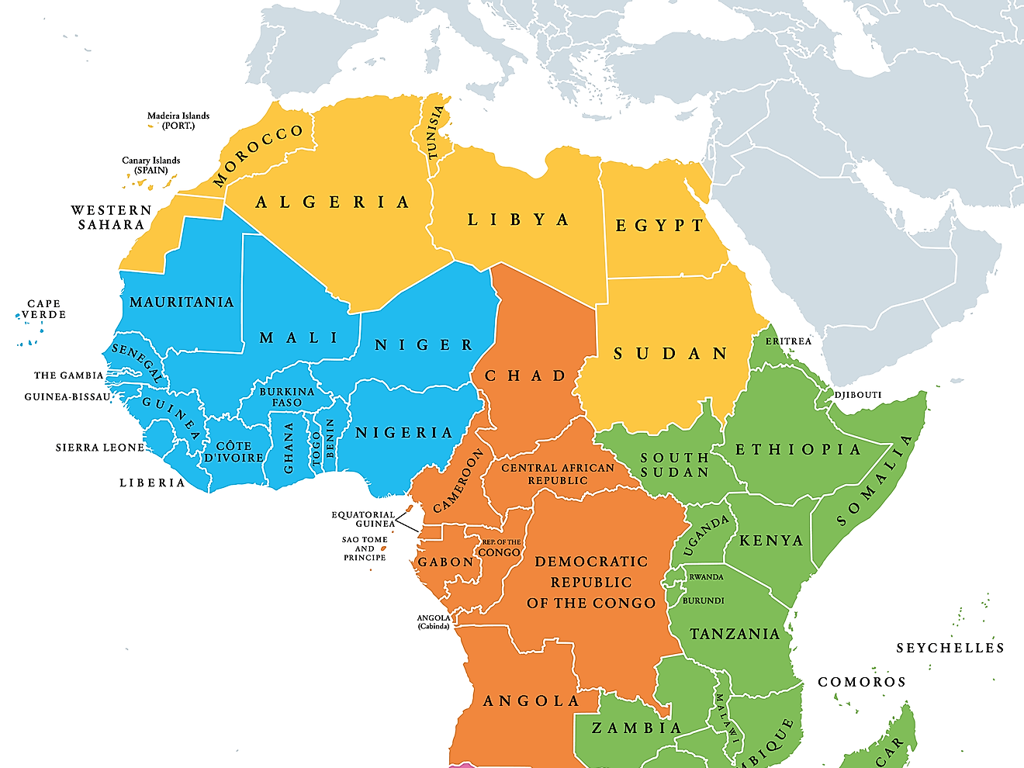Identify Mammals, Birds, Fish, Reptiles, And Amphibians
Subject: Science
Grade: Second grade
Topic: Classification
Please LOG IN to download the presentation. Access is available to registered users only.
View More Content
Welcome to Animal Classification!
– Discovering animal types
– Exploring mammals
– Mammals have fur or hair and feed milk to babies
– Learning about birds, fish
– Birds have feathers and lay eggs, fish breathe underwater with gills
– Reptiles and amphibians
– Reptiles have scales and lay eggs, amphibians live on land and water
|
This slide introduces the concept of animal classification to second-grade students. It’s designed to spark curiosity about the animal kingdom and the different groups within it. As you present, emphasize the unique characteristics of each animal group. For mammals, discuss the presence of fur or hair and the fact that they nurse their young. When talking about birds, highlight their feathers and egg-laying. For fish, focus on their ability to breathe underwater using gills. Explain that reptiles are known for their scaly skin and also lay eggs, while amphibians have the unique ability to live both on land and in water. Encourage students to think of examples of each animal type and share them with the class. This will set the foundation for the rest of the lesson where students will engage in activities to help them identify and classify different animals.
What is Classification?
– Classification organizes animals
– Groups animals by characteristics, such as fur or feathers
– It’s like sorting toys into boxes
– Scientists see animal relationships
– Finds how animals are similar or different
– Helps us understand animal groups
– For example, mammals have fur and birds have feathers
|
Classification is a system used by scientists to group and organize animals based on their characteristics, much like how children sort their toys into different boxes based on type or color. This system helps us understand the relationships between different animals and how they can be grouped together. For instance, mammals are a group of animals that have fur and nurse their young, while birds have feathers and lay eggs. By classifying animals, we can learn more about their behaviors, habitats, and how they interact with each other in the ecosystem. Encourage the students to think of their own examples of classification, such as grouping their stuffed animals by those with fur versus those with scales.
Exploring Mammals
– Mammals are warm-blooded
– Mammals have fur or hair
– Live babies and milk feeding
– Unlike birds’ eggs, mammals have babies that are born alive
– Examples: Dogs, Cats, Elephants
– Common pets like dogs and cats, and large animals like elephants
|
This slide introduces the characteristics that define mammals, a major class of animals. Emphasize that being warm-blooded means mammals can maintain their body temperature, unlike cold-blooded animals whose temperature changes with the environment. Highlight that all mammals have some form of fur or hair at some stage of their life. Discuss how mammals are unique in their way of reproduction and caring for their young, such as giving birth to live offspring and feeding them with milk produced by the mother. Use familiar examples like dogs, cats, and elephants to help students connect the concept with real-life animals they may have seen or know about. Encourage students to think of other examples of mammals and share their thoughts.
Exploring Birds: A Class of Vertebrates
– Birds have feathers and wings
– Feathers keep birds warm and help in flight
– Most birds fly, some can’t
– Penguins swim instead of flying, ostriches run fast
– Examples: Sparrows and Penguins
– Ostriches: Big birds that don’t fly
– Ostriches are too heavy to fly but are the fastest runners
|
This slide introduces the students to the characteristics of birds within the classification of animals. Emphasize that while all birds have feathers and wings, not all of them can fly. Use examples like sparrows, which are common and can fly, and contrast them with penguins, which use their wings to swim, and ostriches, which are flightless but can run at high speeds. Encourage students to think about the different environments these birds live in and how their abilities help them survive. Discuss the importance of feathers for warmth and flight. This will help students understand the diversity within a single group of animals and the concept of adaptation.
Exploring Fish: A Dive into Water Dwellers
– Fish habitats: living in water
– Fish make their homes in oceans, lakes, and rivers.
– Fish features: scales and gills
– Scales protect fish bodies; gills help them breathe underwater.
– Fish reproduction: laying eggs
– Unlike mammals, fish don’t give birth to live young; they lay eggs.
– Examples of fish
– Goldfish are common pets, while salmon and sharks live in the wild.
|
This slide introduces students to the basic characteristics of fish. Emphasize that fish are animals that live exclusively in water environments such as oceans, rivers, and lakes. They have scales covering their bodies for protection and gills that allow them to extract oxygen from water. Discuss the concept of laying eggs and how it differs from the way mammals give birth. Provide examples of fish, such as goldfish, which are familiar to the students as pets, and salmon and sharks, which they might have seen in books or on television. Encourage students to think of other fish they know and how these characteristics apply to them.
Exploring Reptiles
– Reptiles are cold-blooded
– Their body temperature changes with the environment
– They have scaly skin
– Scales protect them and help retain moisture
– Reptiles lay eggs on land
– Unlike fish, reptile eggs are not laid in water
– Examples: Turtles, Snakes, Lizards
– Turtles have shells, snakes have no legs, lizards may have long tails
|
This slide introduces the students to the characteristics of reptiles. Emphasize that being cold-blooded means reptiles can’t regulate their body temperature internally; they depend on the sun’s warmth. Their scaly skin is different from the fur of mammals or the feathers of birds and serves as protection. Explain that reptiles lay eggs on land, which is a key difference from amphibians that lay eggs in water. Use the examples provided to help students visualize and remember different types of reptiles. Encourage students to think of other examples of reptiles and discuss their habitats. This will help students to classify animals into different groups based on their characteristics.
Exploring Amphibians
– Amphibians start life in water
– Like frogs, they first have gills, then develop lungs!
– They grow lungs to live on land
– Their skin needs to stay wet; it’s different from ours!
– Amphibians have moist skin
– Metamorphosis means they change form as they grow!
– They undergo metamorphosis
– Frogs, toads, and salamanders are great examples!
|
This slide introduces students to the fascinating world of amphibians, a key group in animal classification. Emphasize that amphibians have a unique life cycle, starting in the water with gills like fish, and then moving onto land and developing lungs as they grow. Discuss the concept of metamorphosis, a big change that occurs in their life cycle. Use familiar examples such as frogs, toads, and salamanders to illustrate these points. Encourage students to think about how amphibians’ moist skin is different from the dry skin of mammals or the scales of fish and reptiles. This will help them understand the diversity of life and the characteristics that define different animal groups.
Let’s Practice: Animal Sorting Game
– Play a sorting game with animal pictures
– Decide the group for each animal
– Is it a mammal, bird, fish, reptile, or amphibian?
– Work in teams to classify animals
– Cooperation and discussion help learning
– Learn to identify animal groups
– Recognize characteristics of each group
|
This slide introduces a class activity designed to help second-grade students practice classifying animals into their respective groups: mammals, birds, fish, reptiles, and amphibians. Provide a variety of animal pictures for the students to sort. Encourage teamwork and discussion among students to decide the correct classification for each animal. This activity will help reinforce their understanding of the characteristics that define each animal group. For example, mammals have fur or hair and nurse their young, birds have feathers and lay eggs, fish have scales and live in water, reptiles have dry scales and lay eggs, and amphibians have moist skin and can live both on land and in water. The teacher should facilitate the activity, guide students as needed, and ensure that each team has a chance to present their classifications to the class.
Class Activity: Animal Charades
– Let’s play Animal Charades!
– Act out an animal of your choice
– Pretend to be a mammal, bird, fish, reptile, or amphibian
– Classmates guess the animal group
– Use characteristics for clues
– Think about the animal’s skin, how it moves, or sounds it makes
|
This activity is designed to reinforce the characteristics of different animal groups. Before starting, review the main features of mammals, birds, fish, reptiles, and amphibians. Divide the class into small groups and have each student take turns acting out an animal without speaking. The rest of the group should guess which category the animal belongs to based on the characteristics displayed. Possible activities: one student could pretend to fly like a bird, another could crawl like a reptile, or hop like an amphibian. This interactive game will help students better understand and remember the classification of animals.
Review and Goodbye!
– Review animal characteristics
– Mammals have fur, birds have feathers
– Name an animal per group
– Fish swim, reptiles have scales, amphibians live on land and water
– Celebrate our learning
– Looking forward to next class
|
As we wrap up today’s lesson, let’s revisit the key traits of each animal group. Encourage the students to recall one characteristic for mammals, birds, fish, reptiles, and amphibians. Then, ask them to name an example of an animal from each category, reinforcing their understanding of classification. Praise their efforts and participation throughout the lesson. Let them know you’re excited to see them in the next class and encourage them to observe animals they come across before then, thinking about which group they belong to.





